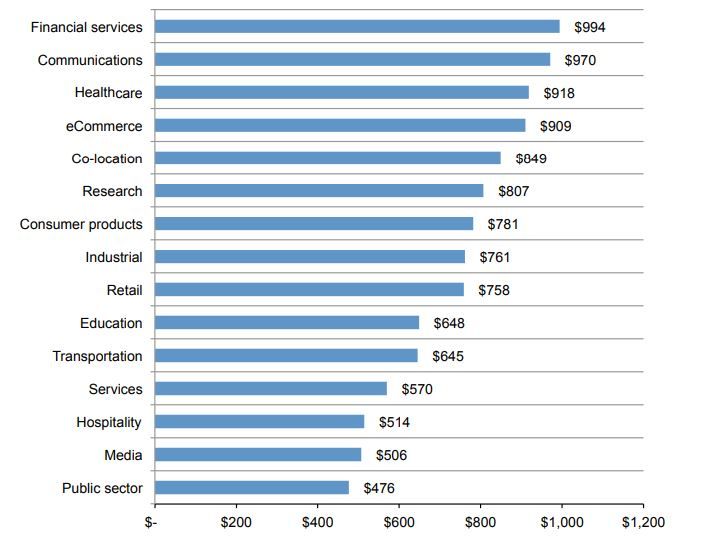
How to calculate the true cost of downtime to your organization
High Availability Published on •4 mins Last updatedOutages result in more than just lost revenue for your organization – but how best to quantify the damage?
There’s one constant when it comes to downtime: whether the outage is expected or not, without access to systems or applications, your organization will probably experience some sort of pain. This might be employees, unable to access the data or tools they need to do their jobs, or worse still – customers that can't transact, communicate with you, or access paid services.
Downtime can lead to significant negative impact for all types of stakeholders, so you’d be forgiven for thinking that most major brands have all but solved the issue – but of course we’ve all experienced well-known websites going down from time to time. In fact, here’s a small selection of online services that have caused us pain as end-users over the last 12 months:

We're not just picking on these brands though. Downtime can affect even the largest, most well-known companies – and recent service outages at Amazon, Google and Microsoft prove that big tech is no exception.
So what’s the actual cost of downtime?
Good question. Also, how long’s a piece of string?
We’ve all seen Gartner’s estimate for the average cost of network downtime ($5,600 per minute, or $300,000+ an hour, if you were wondering), and perhaps you're also familiar with the Ponemon Institute's average figure for a data center outage ($740,357) but these come with a huge number of caveats depending on your:
- sector
- size of business/workforce
- revenue model
- risk threshold
- ...and probably dozens of other variables
Clearly, if you’re an SMB/SME with a relatively modest turnover, a 10-hour outage is very unlikely to cost you $3m. And not only does downtime impact every organization differently, but each downtime event can be different too.
Although the Ponemon Institute report was published in 2016, and has a relatively small sample size of 63 data centers, the breakdown by sector is also telling:
Distribution of total cost for 15 industry segments (in thousands of dollars)
100% uptime is a reasonable expectation
According to the ITIC 2020 Reliability poll, 87% of respondents consider 99.99% (the four nines) of uptime as the minimum acceptable level of reliability for mission-critical servers and applications – the equivalent of one minute a week of unplanned downtime, per server, per year. Something like a server failure can quickly lead to knock-on issues that cause tangible damage to the company, employees, customers, and partners, as well as other, less obvious effects, such as:
- Loss of service
- Loss of revenue
- Lost productivity
- Lost, damaged or destroyed data
- Increased security risk
- Reputational damage
- Customer dissatisfaction
If you work in a critical sector like defense, healthcare, or emergency services, a significant system outage could realistically have the potential to negatively impact public safety or patient outcomes – and at the absolute extreme, cost lives.
Working out the cost to your organization
Interbit Data took the Ponemon Institute's figure mentioned above, and broke it down into different categories that could contribute to the total cost of downtime to your business. Their categories include equipment, recovery, detection, IT productivity, end-user productivity, lost revenue, business disruption, third-parties.
That's a pretty good start.
Other things to consider range from the tangible to the fuzzy: time to resolution, reputational impact (what percentage of customers will lose faith in your service after an outage? What's the cost of losing them? What about an increase in complaints?), the human cost (stressed, overworked or demotivated employees), and the frequency or usage periods of your systems.
The above isn't an exhaustive list, and you'll still need to think about your organization's specific dynamics – as well as the make-up of the outage itself. Eaton's downtime cost calculator focuses on the "economic impacts of data center or system downtime" and includes a comprehensive list of variables, from data center size and location, to revenue per employee and SLA impact – which it cross references against sector. Note that the calculator still references the Ponemon Institute's 2016 figures, so deciding upon the key metrics for your own organization, while updating the figures for 2021 will be key (the report itself states that the average downtime figure jumped 7 per cent between 2013 and 2016).
A real-world example...
The radiology department of a healthcare provider employs 8 MRI scanners, with each performing a scan, on average, every 30 minutes. The department operates from 8am-8pm – crucially, each machine generates $8,000 an hour.
So during a downtime event, the cost of lost revenue is: $8,000 × 8 (units) = $64,000 an hour or × 12 (hours of operation) = $768,000 a day (+ impact on employees, patients, and reputation...)
Hopefully, the above gets you thinking about some of the common factors that influence the impact of downtime on a wide variety of organizations. Have we missed some unique factor that affects your industry or organization? Get in touch to find out more about our flexible solutions – or find out more about load balancing for zero downtime, and download our white paper below.

